While walking around in the garden inspecting my plants, I found my second hornworm of the season. The first worm was much smaller and firmly attached to a pepper leaf stem. I couldn’t pull it loose so I clipped the leaf and set it outside the garden where hopefully a bird made a meal of it. This one is full grown on a Sungold tomato. I was less worried about it because it is paralyzed by a wasp sting and parasitized with lots of wasp larvae, which will soon eat it alive from inside.
This year I decided to try a new strategy for growing peppers, which have been only partially successful in my raised bed garden. I outlined what I was going to try this year here, a strategy inspired by the pepper culture guidance in the Territorial seed catalog. Most of the advice was conventional and common sense: plant healthy, robust plants after weather and soil is consistently warm, etc. What was a bit unconventional was the advice to use a lot of fertilizer, particularly nitrogen, to encourage rapid vegetative growth. Most growing guides warn you to not over fertilize to avoid the vegetative growth that Territorial recommends. But common sense tells you, you are not going to get a large pepper harvest from small plants. The pepper plants need the root structure and vegetative backbone to support a large set of fruit.
So, what are the results to date? The bar is not very high from last year, when I got two Jalapenos and one Hungarian wax from all of my plants. I succeeded in growing robust, healthy pepper plants this year, versus last year's disaster using a coir-based starting mix.
Then weather intruded and cold, rainy weather delayed setting out the plants. I finally decided to go ahead and transplant since the plants were getting very leggy. The peppers did OK and seemed to be growing nicely, but then with continual cold, wet weather that frequently flooded the garden, the pepper plants were hit with an unknown, probably bacterial, disease. They were saved by copper spray, but removing affected foliage almost denuded them. Once weather warmed up and dried out, they did rebound but were obviously set back in development. We then encountered an extended period of temperatures in the high 90s °F (32++ °C). The pepper blossoms dropped and growth essentially stopped.
Finally, the hot weather broke and we have had temperate, almost typical NE summer weather, although a bit dry. The peppers are now growing and blossoming again and I am getting some new fruit set. This post is a request to the weather gods for another month or two of summer-like weather so I can see my pepper experiment to completion. Here’s some of the supporting evidence for the request.
Above is an Aconcagua pepper, an Argentinian heirloom that produces long, Cubanelle-type peppers for frying. Last year these were stunted and didn’t produce a single fruit. This year I have harvested a few small peppers, but now the plants have achieved enough size and are starting to flower again and set fruit. It would be nice to have a basket of these in the kitchen.
My Jimmy Nardello peppers above have been the most productive and definitely are on the list for next year. I’m letting a few of these completely ripen so I can try drying them ristra-style. After the first flush of peppers, they are starting to blossom again and it would sure be nice to add a few more to my ristra.
These are my Lipstick peppers and you can see another one starting to ripen. This is a small, corno di toro type pepper bred by Johnny's to ripen early in short season areas like NE. It is a thick-walled red pepper, ideal for preserving, and I wanted to try the method Michelle mentioned, developed by Hank Shaw. So far, not enough peppers to try this. If the weather gods grant my wish, I may get enough from my four plants to actually try this method. The plants are blooming again and setting fruit.
My Tiburon ancho chilies above (an F1 hybrid poblano from Johnny’s) are now huge, 3 feet tall, and starting to blossom and set fruit again. I had a few peppers early but most of them had rotten spots. The new crop look great and all I need is another month or two of summer so I can finally make some chiles Rellenos from fresh peppers. It would be even nicer to be able to freeze an extra bag of the stuffed peppers for the winter.
The Pimiento de Padron peppers above gave me a small harvest early on, enough for my wife and I to have a couple of treats. They are now starting to flower again and I sure would like to have some more of these.
So, all I need from the weather gods is 4-6 weeks more of moderate weather, with no heat extremes or really cold nights, please. And none of the usual tricks, like a killing frost the end of September followed by 4 weeks of balmy Indian summer weather in October!
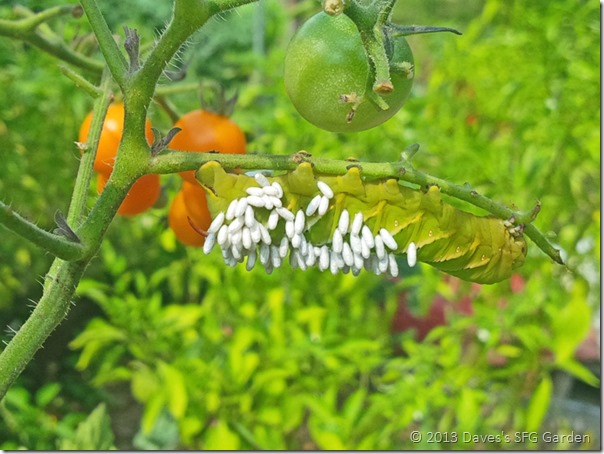
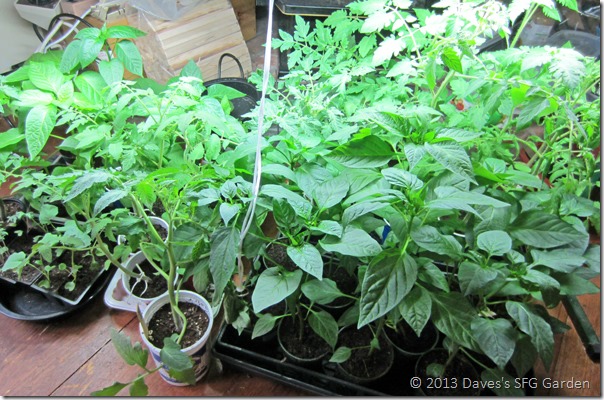

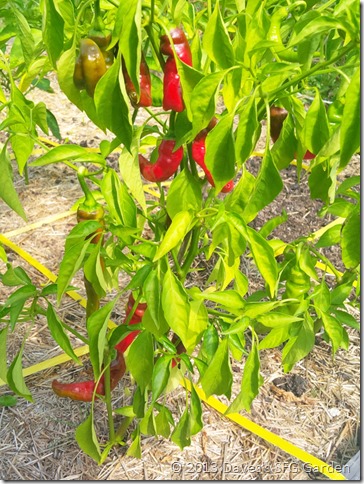
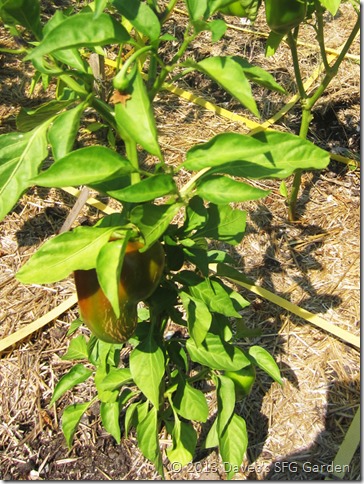
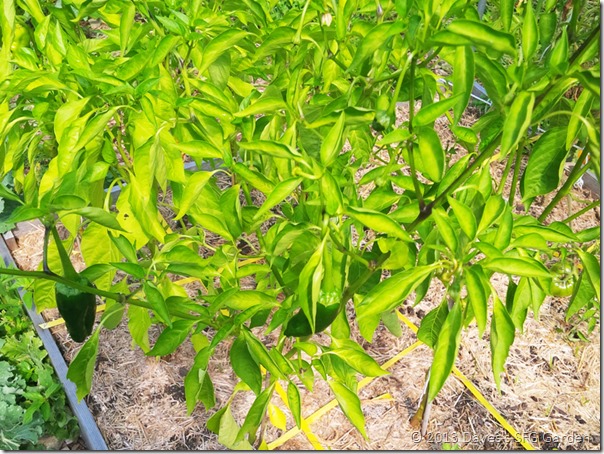
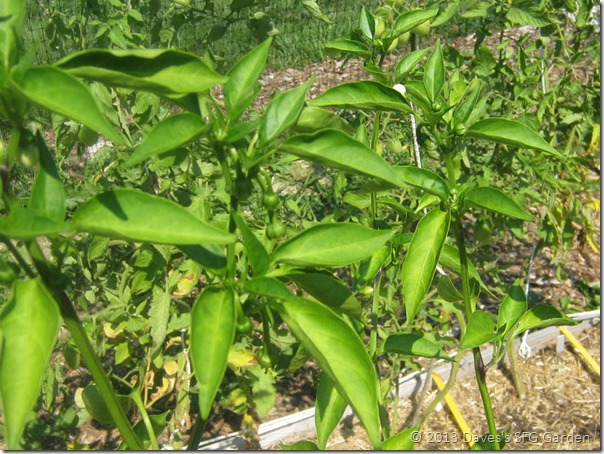

Hmm, that actually makes sense to try to grow your pepper plants big and bushy prior to their forming fruits. I did the opposite this year, holding off nitrogen and as a result my plants were still tiny when they started fruiting. Not at all a good idea. I've only gotten a handful peppers. Thank goodness for farmers' markets! Next year, I'll use your strategy, thanks!
ReplyDeleteThat's what I did in years past. When planted in good garden soil they did OK but in the raised beds, not so much. This year is much better with the fertilizing strategy.
DeleteI will cross my fingers for you - I hope you get more pardons. I potted up my plants that seem to have gotten through our winter ok. They seem to be a pretty cold tolerant variety.
ReplyDeleteThanks, Liz. Good to know I can expect the Padrons to keep producing if the weather cooperates.
DeleteYour peppers are looking so good! Isn't it so cool to find a worm with all that larvae on it!
ReplyDeleteInteresting experiment with the peppers. Sometimes the 'conventional wisdom' isn't the best answer. I will have to read the Territorial guidance and experiment next year. Growing bigger plants to get more peppers makes good sense to me.
ReplyDeleteLove that shot of the hornworm with the wasp eggs! Often times it is best to not intervene and let Ma Nature take care of things, it tends to be so interesting to watch.
ReplyDeleteI think that the advice to get your pepper plants going strong with a good dose of nitrogen is a good idea and something that I should be doing as well. Many of my plants are small this year, and have been in previous years as well. I've had problems with large fruited peppers getting sunburned because there isn't enough foliage to protect the peppers and I have to cover the plants with Agribon to prevent too much sunburn. Next year I will try to remember to encourage more vegetative growth early on.